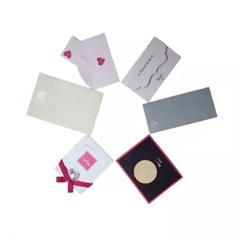Common card problems
Can the card be customized?
We have a professional design team, free design, and layout, one-to-one service, tailor-made your own card for you!
Is the production equipment professional?
We have advanced professional printing equipment and all production equipment from design output to product molding, which can meet the individual needs of customers for different products.
Are the materials used environmentally friendly?
The use of FSC-certified high-quality paper, environmentally friendly materials, environmentally friendly water-based inks, non-toxic and odorless, let you use it more assured!
What are the materials for business cards?
The more long-term use is 300 grams of coated paper, which can be cost-effective and low-cost; you can also choose Dutch white card or Lynika if you want a thicker paper, but there are also some that need to be used repeatedly or stored for a long time. PVC material can be considered. If you want a better effect, you can also consider coating (sub-film, light film, etc.).
What material is used for ordinary greeting card printing?
1. Canggu paper has a variety of textures on the surface, with bumps and thick textures, suitable for business card design for high-level business people.
2. On Ange paper, the texture is in the shape of the original point to increase the fineness of the touch, the ink penetrates and dries quickly, and the color is saturated and gorgeous.
3. Eggshell paper, also called gentleman’s paper, is a patterned paper produced in Japan. The surface is stretched like a hand thread, with high color rendering, strong three-dimensional effect, smooth and smooth. Suitable for classical business card design.
4. The characteristic of a Dutch white card is a kind of thick paper that is firm and thick, with a large amount. The main purpose of white cardboard: printing business cards, certificates, invitations, covers, postcards, etc.
5. The tone of ice white paper can produce different color feelings according to the change of viewing angle. Its luster is formed by diffused and refracted light to the surface of the paper, with a silver flash effect, so printing patterns with metallic characteristics will be very good.
What material is the credit card made of?
Credit cards are made of plastic.
What material is the membership card made of?
Because PVC has the characteristics of easy heat sealing, it is easy to implant chips and coils in membership cards and smart cards. PET hard film has good toughness, high transparency, flammability, and does not produce harmful gases when burned. It is an environmentally friendly material, but it is expensive and suitable for high-end card making products, but it is not easy to heat seal, which brings great difficulties to packaging. To solve this problem, people compound a layer of PVC film on the surface of PET, named PETG rigid sheet, but the price is higher. ABS is a translucent, non-toxic, odorless, light yellow thermoplastic resin. It is a terpolymer of acrylonitrile, butadiene, and styrene. It has heat resistance, oil resistance, rigidity, chemical resistance, and It has toughness, cold resistance and electroplating, good processability, and surface gloss. Therefore, card companies often use it to make keychain smart cards.
What printing method is used for the membership card?
All use offset printing or screen printing
In terms of the quality of the finished product: the effect of offset printing is much better than that of screen printing.
In terms of shipping speed: screen printing is faster than offset printing.
What kind of paper is generally used for greeting cards?
You can choose white cardboard, corrugated paper, colored cardboard, crepe paper, cotton paper, wrapping paper, electro-optical paper, KT board, etc. Generally, you need to draw a pattern on it, just use white cardboard or color cardboard.
What are the benefits of paper cards?
Paper cards are a new kind of paper card that is conducive to environmental protection. They are gradually replacing PVC material cards. They are mostly used in fast-moving consumer goods and cultural and entertainment industries, such as games, audio-visual, etc. Its advantages of low cost and easy production are widely accepted and used by all walks of life. It has the characteristics of low cost, strong confidentiality, environmental protection, and energy-saving.



















































